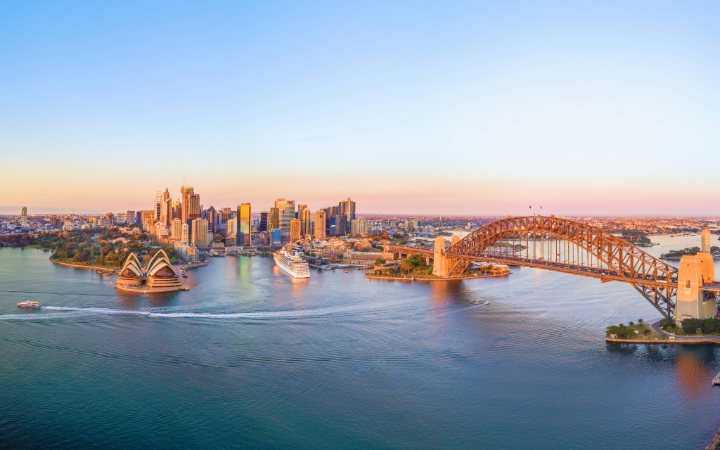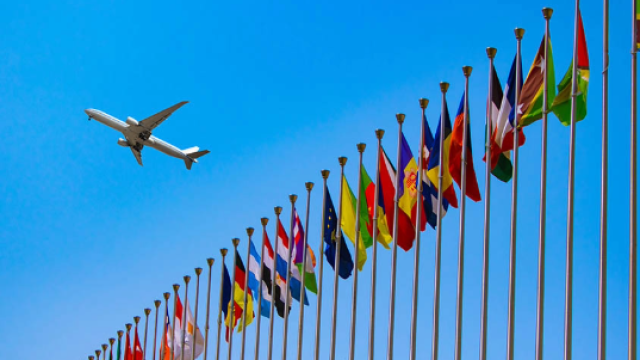
Sydney to Melbourne load factors squeezed as corporate demand takes off
29 April 2025 - Load factors are increasing between Sydney and Melbourne, with aircraft on the route fuller than ever. To passengers, it may appear that more people are travelling between the two major capitals more frequently. But, in reality, demand is relatively steady, but capacity is decreasing and passengers have less choice, forcing more passengers onto less flights.
But, in good news, according FCM Consulting’s latest Q4-2024 Quarterly Trends Report, the cost of an economy fare between Sydney and Melbourne has steadied.
The latest data from November 2024 from Bureau of Infrastructure, Transport and Regional economics (BITRE) shows the total number of passengers as a proportion of the total number of seats flown, which is known as the load factor, was at a record 92.3 per cent[1]. That far exceeds the previous record of 85.8 per cent in July 2024; the month Regional Express entered voluntary administration.
In a sign that load factors will only be further tightening, BITRE’s latest data has recorded that passengers moving between Sydney and Melbourne rose by 3.4 per cent in December 2024 compared to December 2023, while the volume of available seats did not move[2].
Despite a moderate increase in passenger levels on this route, the seat capacity is still seven per cent below the volume of seats that were available on airlines in 2019[3].
FCM Travel General Manager ANZ Renos Rologas said the volume of passengers travelling between Sydney to Melbourne was increasing, but more importantly, load factors were tightening, and availability of seats on the Sydney to Melbourne route was squeezed.
“A high load factor indicates that an airline has full planes with most of the seats booked, so it is generally a clear indictor of demand for a specific route or region.
“Every flight needs a full crew, a well-maintained aircraft with enough fuel, and services to entertain customers and ensure their comfort – so a high load factor is important to airlines to ensure they’re driving high revenues. But it’s a fine balance, because a high load factor, which squeezes demand, can see the cost of fares really balloon for passengers.”
FCM Consulting’s analysis of purchased airfares in the calendar year to October 2024, compared to the same period in 2023, has revealed that the cost of an economy ticket between Melbourne and Sydney remained the same[4].
“The economy cabin on the route is so highly sought-after that we are seeing airfares sit steady between Sydney and Melbourne – without a big capacity or competition shake-up, this is unlikely to improve any time soon.
“It’ll come as no surprise to people who fly between Sydney and Melbourne that it’s always a packed flight, particularly in the early mornings and late evenings when business travellers are starting and ending their day.
“The demand is heavily led by corporates manoeuvring between head offices, visiting interstate clients for meetings, attending events and conferences, and generally keeping a foot in both states,” Mr Rologas said.
“To put the load factor of 92.3 per cent into perspective, Qantas’s Boeing 737-800, which is one of the most common aircraft that services Sydney to Melbourne, will have about 12 business seats and 162 economy seats. With that as a scale, it means each flight will only have an average of 14 empty seats.
“It would appear that airlines are pumping up load factors on that Sydney to Melbourne route, but it comes as a result of limited competition, a lack of access to the right aircraft to service the country, and quite frankly, good airline management.
“Personally, being based in Sydney and travelling around Australia on a weekly or fortnightly basis, I see this play out for myself.”
The flock between the two major capitals is recognised by the OAG, which dubbed the Sydney to Melbourne route the fifth busiest domestic route in the world, offering up more than 9.2 million seats in 2024. It maintained its 2023 fifth position ranking. The top four busiest domestic routes were in South Korea, Vietnam, and two in Japan[5].
According to FCM Consulting’s Report, passenger load factors globally reached 83.4 per cent in November 2024, which was down from a high of 86.2 per cent in August 2024, as both corporate and leisure travel peaked[6]. The global average load factor is nearly nine per cent lower than the Sydney to Melbourne load factor.
Mr Rologas said there was a wide variation on what it cost a passenger to travel between Sydney and Melbourne, which all depended on the time of year and seasonality, what major events were taking place, and how far in advance travellers booked.
“Fares booked close to the date of departure are generally going to cost higher than an average fare, as more seats are booked and availability on the flight is lower.
“We’ve seen it happen around major events such as the Australian Open, and the Formula One earlier in the year. It of course peaked when Taylor Swift was in town when we saw some all-time highs in airfare costs.”
[1] BITRE, Domestic Airline Activity
[2] BITRE, Domestic Traffic December 2024
[3] OAG, Busiest Routes Worldwide
[4] FCM Consulting Q4 2024 Trends Report


